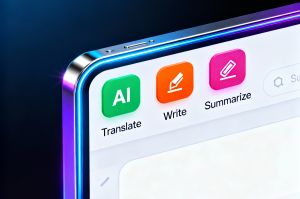 Cybersecurity for the masses: best practices and tools
Cybersecurity for the masses: best practices and tools
In one of the earlier posts dedicated to virtual private networks, we mentioned that signing up for a VPN service does not mean you are totally protected while online (and offline, by extension). Cybersecurity is not a new field, it started shaping during WWII, with the need to encrypt and decrypt messages, and the first recorded hacking as we basically understand it now happened at MIT in 1961. Regular users, though, began to recognize this term much later, in the early 21st century, when computers and all sorts of hackable digital devices became ubiquitous. Today, neglecting protection in the virtual world is a recipe for disaster. And although hacking now involves a lot of social engineering, technical safeguards remain essential to online safety. We’ll save the former for a later piece and cover the latter in this one.
1. Antivirus software
As simple and basic as it sounds, antivirus software remains the foundation of a sound cybersecurity strategy. Sure, Windows has Defender, and it is a decent enough protection; but will you settle for “decent enough” when with the ultimate threat of complete identity theft, pretty much everything about your person is at risk?
There are many packages out there, from open-source (ClamWin, Armadito, MoonSecure) programs to comprehensive antivirus suites offering industry-grade security (Kaspersky, ESET, Bitdefender). The names in parentheses are just examples; check out Informer’s Antivirus & Security section and find a solution that fits your needs:
Informer – Antivirus & Security
2. VPN (Virtual Private Network)
Long story short, VPN encrypts your traffic when you browse, and keeps eavesdroppers away when you, for example, enter your credit card credentials in an online store. It’s not a guarantee that you’re completely safe while browsing, but a thick layer of protection that makes hacking you a much more tedious process. Check these posts about VPN we published earlier:
- How to set up VPN on a Windows PC
- Top 10 VPN services compared (2025)
- Seven valid reasons to set up a VPN
3. Firewall
Originally, a firewall is sort of a permanent shield dividing a space and preventing fire from spreading and destroying everything. In IT, a firewall plays a slightly different role: it only blocks connections that violate the rules, and lets those compliant therewith through. Firewalls are integral parts of modern operating systems; in Windows 11, the firewall is merged with Defender.
Regular users rarely poke around settings of the built-in firewall in Windows, because it comes set up quite well out of the box. There are scenarios, however, which call for adjustments, or even a third-party tool that’s more robust and easy to configure. If you believe this is your case, consider Comodo Free Firewall, ZoneAlarm Free Firewall, or GlassWire Firewall.
4. Password managers
Most people are slow learners, alas. The fact that 123456 is still the most popular password in the world, followed by – drumroll (and facepalm) – 123456789 proves this statement. It should be acknowledged, though, that inventing passwords that don’t trigger the “think again, this one’s too weak” reaction isn’t such an easy task, and memorising those that are strong enough is next to impossible for the average person. Password managers to the rescue: programs like KeePass, Kaspersky Password Manager, Trend Micro Password Manager generate passwords, store them securely, and can be set up to be accessible across all your devices. Check out the respective section of the Informer Catalog:
5. Two-factor authentication (2FA)
Simply put, two-factor authentication means that to log on to a service or a site, you have to enter a single-use code usually sent in an SMS or taken from a standalone app like Google Authenticator. There may be more exotic options like opening some application and performing an action therein.
Anyway, this one is quite simple: enable 2FA whenever a service suggests that. This does add a step to your journey, but it’s a solid layer of protection, definitely worth the extra effort.
6. Regular software updates
This one is as simple and plain as the previous one: keep your software fresh and patched, check for updates and run them on a regular basis to make the wall separating you from assorted malicious actors a bit thicker.
Many programs nowadays have automatic update routines and require little intervention in this regard. But if you want an automated solution that does it all without bothering you, get Software Informer, a lightweight and free updater app that keeps your programs fresh and secure:
Download Software Informer
7. Data backup
Regardless of how prepared you are for incidents, there is simply no 100% guarantee nothing bad will happen to your hardware and software. A power surge frying the drive is a real possibility, same as a cat (or you) spilling coffee on the laptop.
A good contingency plan always includes backing up everything important. We’ve covered this subject in a three-part series, check it out:
- The GFS backup strategy: never lose your data (again)
- Inexpensive cloud backup services with personal plans
- 6 free backup tools for Windows
8. Secure browsing practices
You will be amazed upon learning that even weathered IT professionals fall prey to internet scams of all types. Wrongdoers are very inventive, they ride the very tip of the technology wave, so all those levels of protection mean nothing unless you stay vigilant, don’t click links in letters from unknown senders (nor open files therefrom), and generally observe the online hygiene principles based on common sense. At Informer, we keep tabs on major cybersecurity developments, so stay tuned to learn about real threats in a timely manner!



